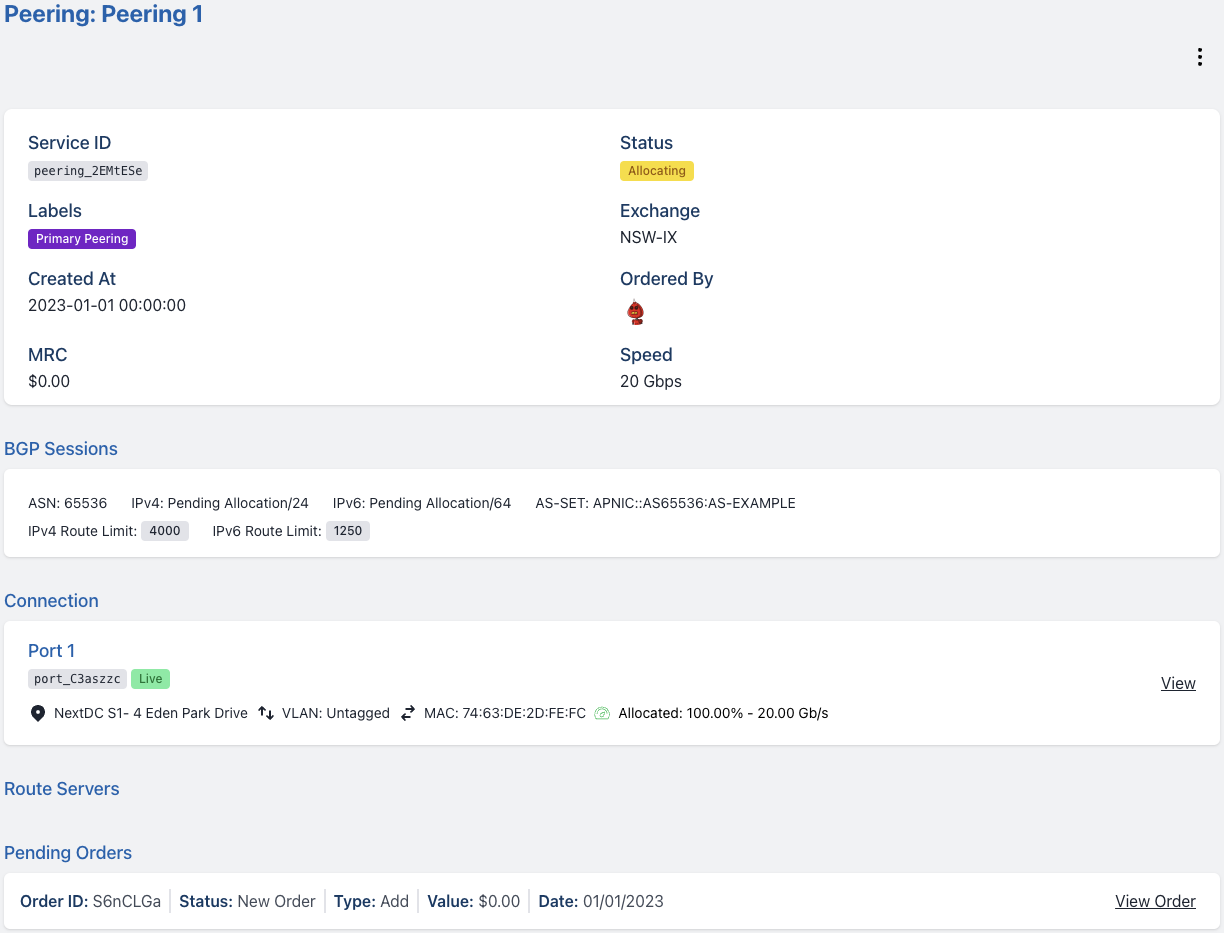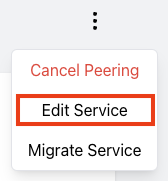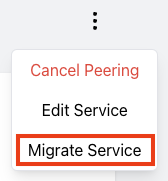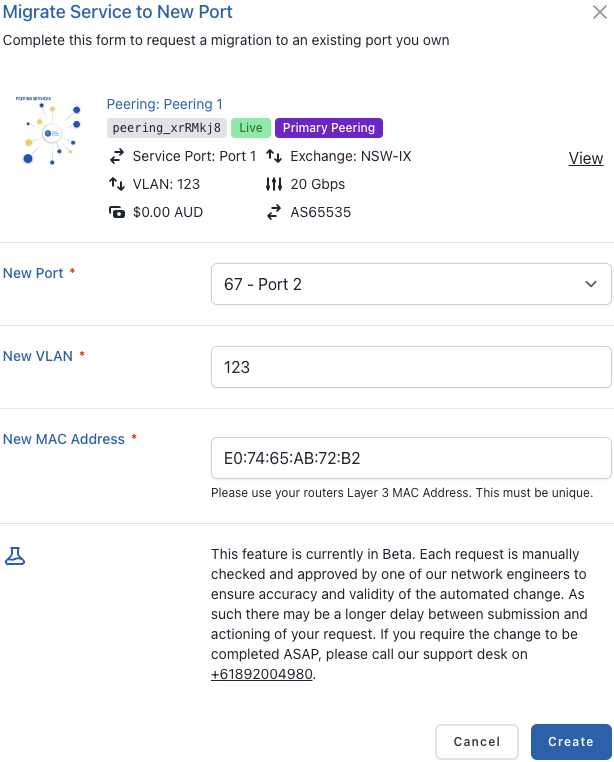Peering
Peering
A Peering Service provides Layer 2 access to an individual IX, allowing you to exchange prefixes with other peers using BGP via either the IX route servers, or bilaterally with individual peers by private arrangement.
Note: You need an active Service Port before you can order a Peering Service.
Ordering a Peering Service
- Navigate to the Services > Service Ports page and select the port you would like to add the peering connection to by clicking View.
- Click the Add Connection button and select Peering Services.
- Use an internal reference for your Service Name.
- Provide VLAN Tagging details if required.
- Enter you MAC address or turn off the slider to provide it later.
- Enter your ASN, AS-SET and prefix limits.
- Enter your speed (in Mbps) or use the slider to select.
- Review the path and fee.
- Click Order Connection.
-
Your Peering details will be displayed, in an Allocating status, within the port they’ve been ordered against AND on the Peering page. Please review all the details by clicking View.
-
You will receive an email confirmation of your order when it’s submitted and a second email when the order has been completed. The status will update within the Portal as your Peering Service order is processed.
Editing a Peering Service
A Peering Service's attributes, such as VLAN ID or MAC address, can be changed via the portal. Extended Reach Peering Services can also have their connection speed changed through this option. To edit a Peering Service:
-
Locate the Peering Service to be edited:
- Navigate to the Peering page and click View on the Peering Service you wish to edit, or:
- Navigate to the Services > Ports page, click View on the port the Peering Service is assigned to, then click View on the Peering Service you wish to edit.
-
Click the Action Menu and select Edit Service.
-
Make your changes, then click Save Changes.
-
The status of the Peering Service will change to Change Request - Pending Approval, and a new Change Request will appear under Pending Changes.
-
Once the Change Request has been processed, the status of the Service Port will return to Live, and the Change Request will move to Completed Changes.
Migrating a Peering Service
A Peering Service can be migrated, with the following conditions:
- Both the current port and the target port must be active.
- Both the current port and the target port must be within the same IX.
- The target port must not already host a service with the same VLAN ID as the Peering Service to be migrated.
To migrate a Peering Service:
-
Locate the Peering Service to be migrated:
- Navigate to the Peering page and click View on the Peering Service you wish to migrate, or:
- Navigate to the Services > Ports page, click View on the port the Peering Service is assigned to, then click View on the Peering Service you wish to migrate.
-
Click the Action Menu and select Migrate Service.
-
Select the target port for the migration, edit the VLAN ID and MAC address as required, then click Create.
-
The status of the Peering Service will change to Change Request - Pending Approval, and a new Change Request will appear under Pending Changes.
-
Once the Change Request has been processed, the status of the Service Port will return to Live, and the Change Request will move to Completed Changes.
Cancelling a Peering Service
-
Locate the Peering Service to be cancelled:
- Navigate to the Services > Peering page and click View on the Peering Service you wish to cancel, or:
- Navigate to the Services > Ports page, click View on the port the Peering Service relates to, then click View on the Peering Service you wish to cancel.
-
Click the Action Menu and select Cancel Peering:
-
Cancellation date will default to + 30 days in compliance with our cancellation policy.
- Please add any further information or notes that are required.
- Click Cancel Service.
- You will receive an email confirmation of your cancellation when it’s submitted and a second email when it has been completed. The status will update within the Portal as your Peering Service cancellation is being processed.








